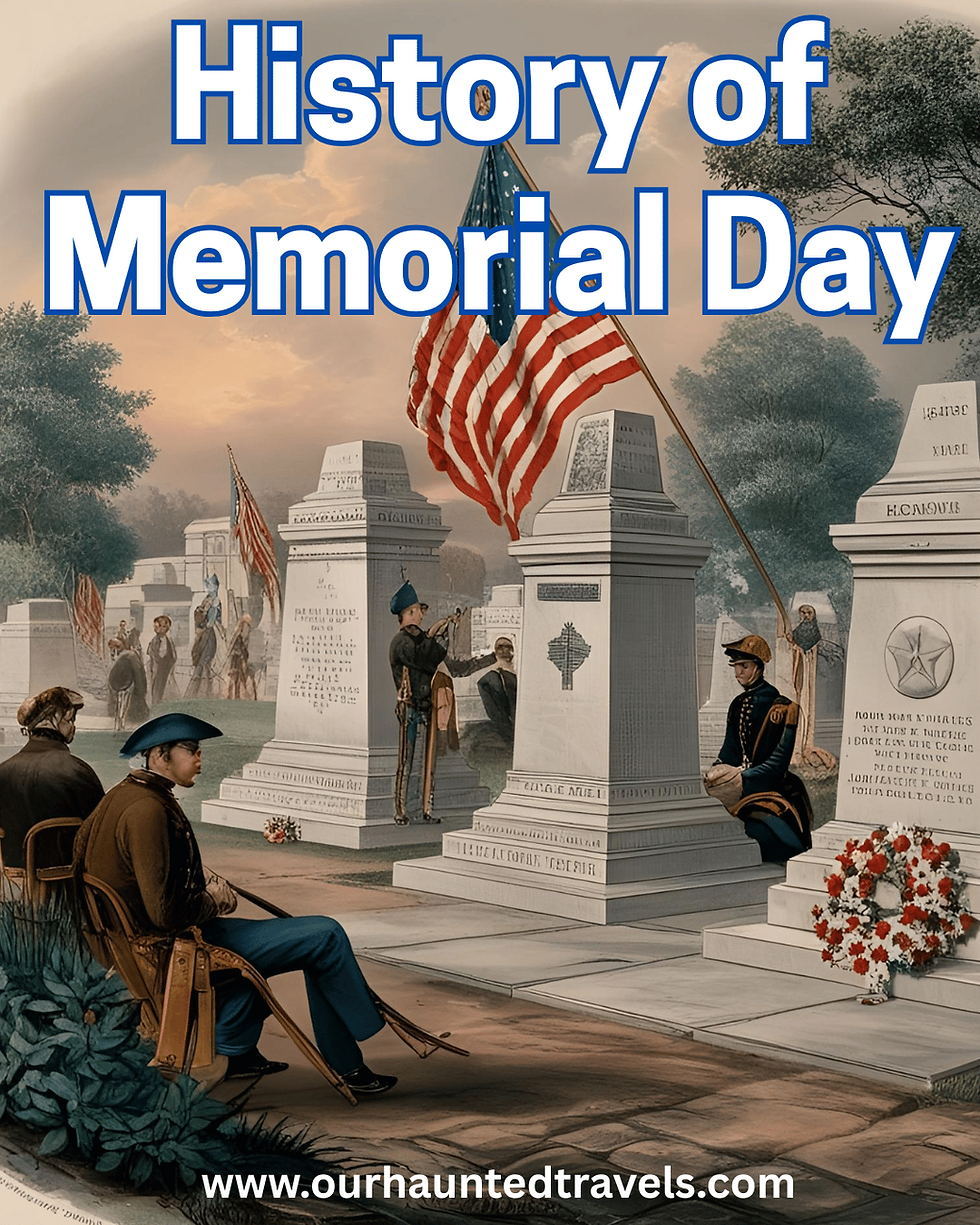History of Memorial Day
- PANICd Paranormal Videos
- May 26
- 3 min read
Updated: May 26
Memorial Day, originally known as Decoration Day, has its roots deeply embedded in the aftermath of the American Civil War, a conflict that claimed the lives of an estimated 620,000 to 750,000 soldiers. The holiday emerged as a poignant response to the immense loss of life and the need for a collective process of mourning and remembrance.

Communities across the nation sought to honor the sacrifice of these fallen soldiers, leading to the establishment of a day specifically dedicated to commemorating their bravery and service. The practice of decorating graves with flowers and flags became a symbolic gesture of gratitude and respect, reflecting a society grappling with the harsh realities of war and the toll it took on families and communities.
The first widely recognized observance of Memorial Day took place on May 30, 1868. This significant event was initiated by General John A. Logan, who was the commander of the Grand Army of the Republic, a fraternal organization of Union veterans. He proclaimed this day as a time for decorating the graves of fallen soldiers, emphasizing the importance of honoring those who had made the ultimate sacrifice. The choice of May 30 was intentional; it was selected because it did not coincide with the anniversary of any particular battle, allowing for a day of reflection free from the associations of specific conflicts. The first observance included the decoration of graves at Arlington National Cemetery, where thousands of Union and Confederate soldiers were laid to rest, marking a solemn occasion that would set a precedent for future commemorations.
As the years progressed, Memorial Day evolved significantly, expanding its scope to honor all Americans who have died in military service, transcending the boundaries of the Civil War. This transformation reflected the changing nature of American society and its ongoing conflicts, including World War I, World War II, the Korean War, the Vietnam War, and subsequent military engagements. In 1971, Memorial Day was officially recognized as a federal holiday by Congress, solidifying its status as a national observance. The decision to designate the last Monday in May as Memorial Day was intended to provide a three-day weekend for workers, thereby encouraging more widespread participation in commemorative activities and allowing families to gather and honor their loved ones.
Today, Memorial Day is marked by an array of traditions and observances that reflect the deep respect and gratitude felt by the American public. Among the most notable customs are:
Visiting cemeteries and memorials, where families and friends gather to pay their respects and remember the lives of those who served.
Placing flags on graves, a practice that symbolizes honor and remembrance, is often accompanied by the laying of flowers or wreaths.
Participating in parades, which serve as public displays of patriotism and community solidarity, often featuring veterans, active military personnel, and local organizations.
Holding memorial services, where communities come together to reflect on the sacrifices made by military personnel, often includes speeches, moments of silence, and the playing of taps.

These traditions not only commemorate the fallen but also create an atmosphere of solidarity and collective remembrance among Americans, reinforcing the values of patriotism and gratitude.
Memorial Day serves as a powerful reminder of the sacrifices made by military personnel throughout the history of the United States. It is a day designated for reflection, remembrance, and honoring those who have given their lives in service to the nation. The holiday prompts individuals and communities to pause and consider the profound impact of war, not only on the soldiers who serve but also on their families and the nation as a whole. It encourages conversations about the importance of peace, the value of freedom, and the ongoing responsibility of citizens to remember and honor those who have fought to protect these ideals. In this way, Memorial Day transcends mere observance; it becomes a vital part of the American narrative, linking past sacrifices to present freedoms and future aspirations.










Comments